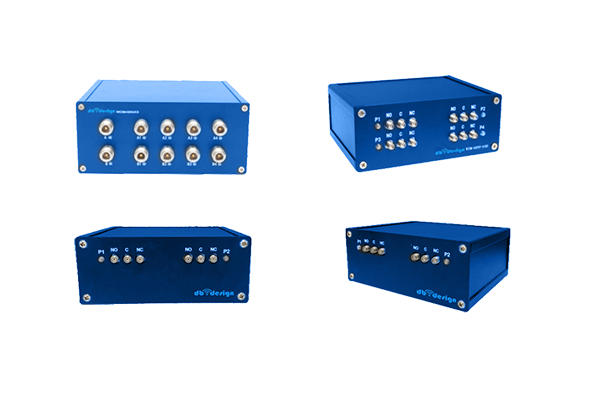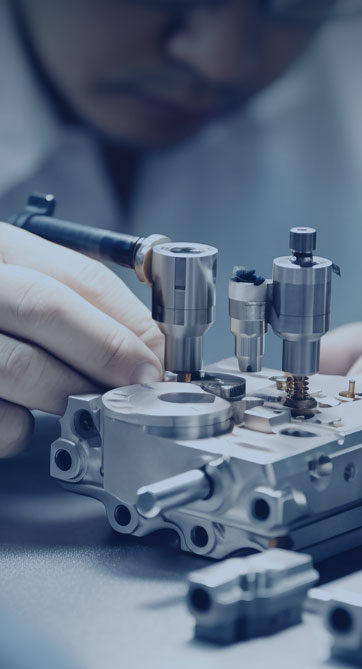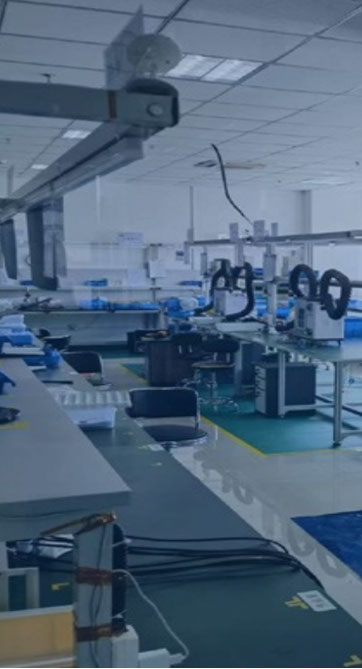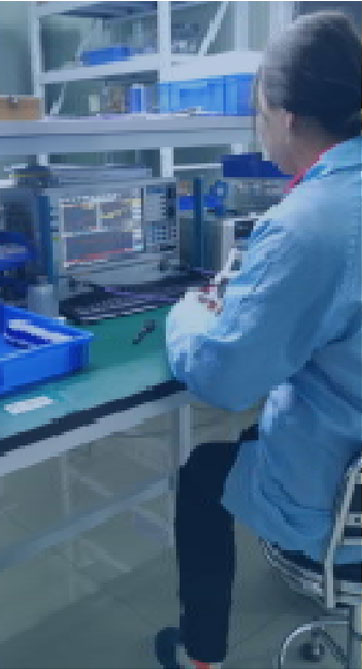
Pin diodes have become a crucial element in high-frequency systems because of their innate electrical traits Their prompt switching characteristics combined with low capacitance and small insertion loss enable efficient use in switching modulation and attenuation scenarios. The main mechanism of PIN diode switching uses bias voltages to regulate copyright flow through the device. Applying bias shifts the depletion-region extent within the p–n junction and so modifies conductivity. Modifying the applied bias permits PIN diodes to function at high frequencies with minimal signal distortion
For applications demanding exact timing and control PIN diodes are typically incorporated into complex circuitry They are implemented in RF filtering schemes to enable selective frequency band passage or blockage. Their high-power endurance makes them appropriate for amplifier power dividing and signal generation functions. Miniaturization and improved efficiency of PIN diodes have extended their usefulness across wireless systems and radar platforms
Study of Coaxial Switch Performance
The design of coaxial switches is intricate and needs detailed assessment of numerous variables The performance is governed by the choice of switch type frequency operation and insertion loss properties. An efficient coaxial switch should reduce insertion loss while optimizing isolation between ports
Performance analysis requires evaluating key metrics such as return loss insertion loss and isolation. Such parameters are usually determined via simulations analytic models and physical experiments. Careful and accurate evaluation is vital to certify coaxial switch reliability in systems
- Analytical methods simulation packages and experimental testing are standard approaches to coaxial switch analysis
- The behavior of a coaxial switch can be heavily influenced by temperature impedance mismatch and manufacturing tolerances
- Emerging developments and novel techniques in switch design concentrate on boosting performance while minimizing footprint and energy use
LNA Design for Maximum Fidelity
Maximizing LNA performance efficiency and gain is necessary to secure exceptional signal quality in applications Successful optimization depends on proper transistor selection correct biasing and appropriate circuit topology. Good LNA design practices focus on lowering noise and achieving high amplification with minimal distortion. Modeling and simulation tools enable assessment of how transistor choices and biasing alter noise performance. Securing a low Noise Figure indicates superior capability to amplify while adding little noise
- Choosing active devices with low noise profiles is a key requirement
- Adopting proper optimal biasing is essential to reduce noise creation in devices
- Circuit topology choices are decisive for the resulting noise performance
Implementing matching networks noise reduction strategies and feedback control enhances LNA outcomes
PIN Diode Based RF Switching and Routing

PIN diode switching mechanisms deliver versatile and efficient RF path routing across designs They can be switched very fast to allow flexible dynamic routing of RF signals. Strong isolation and low insertion loss in PIN diodes contribute to reduced signal degradation. They find use in antenna selection systems duplexers and phased array antennas
The applied control voltage modulates resistance to toggle the diode between blocking and passing states. In its open state the diode’s resistance is high enough to stop signal flow. Introducing a positive control voltage reduces resistance and opens the RF path
- Moreover furthermore additionally PIN diode switches provide quick switching low energy use and small form factors
PIN diode switch networks can be configured in multiple architectures and designs to support complex routing tasks. By interconnecting multiple switches designers can build dynamic switching matrices for flexible path configuration
Coaxial Microwave Switch Assessment and Efficacy

The evaluation assessment and testing of coaxial microwave switches is essential to confirm optimal operation in complex electronic systems. Many factors such as insertion reflection transmission loss isolation switching speed and spectrum range govern switch performance. Comprehensive assessment includes testing these parameters under multiple operating environmental and test scenarios
- Moreover the evaluation must factor in reliability robustness durability and environmental stress tolerance
- Finally results from comprehensive testing offer crucial valuable essential data to inform selection design and optimization of switches for particular applications
Comprehensive Review on Reducing Noise in LNA Circuits
LNAs are indispensable in wireless RF communication systems because they raise weak signals while suppressing noise. This review gives a broad examination analysis and overview of methods to lower noise in LNAs. We examine investigate and discuss the fundamental noise sources including thermal shot and flicker noise. We also review noise matching feedback implementations and biasing tactics aimed at reducing noise. The review underlines recent breakthroughs like innovative materials and circuit architectures that achieve lower noise figures. By elucidating noise reduction principles and applied practices the article aims to be a valuable resource for engineers and researchers building high performance RF systems
Rapid Switching System Uses for PIN Diodes

They exhibit unique remarkable and exceptional features that render them ideal for high speed switching Low capacitance and low resistance contribute to very fast switching enabling precise timing control in demanding applications. PIN diodes’ adaptive linear voltage response permits precise amplitude modulation and switching. The combination of adaptability versatility and flexibility makes them suitable applicable and appropriate across many high speed applications Typical domains include optical communication systems microwave circuitry and signal processing hardware and devices
Integrated Circuit Coaxial Switch Circuit Switching Technology
Integrated circuit coaxial switch technology marks a significant advancement in signal routing processing and handling within electronic systems circuits and devices. These specialty ICs are engineered to control manage and direct signal flow through coaxial cables offering high frequency performance and low latency propagation insertion times. IC miniaturization supports compact efficient reliable and robust designs appropriate for dense interfacing integration and connectivity contexts
- By rigorously meticulously and carefully implementing these techniques practitioners can achieve LNAs with remarkable noise performance for sensitive reliable electronics With careful meticulous and rigorous deployment of these approaches developers can accomplish LNAs with outstanding noise performance enabling trustworthy sensitive electronics Through careful meticulous and rigorous implementation of these approaches engineers can achieve LNAs with exceptional noise performance supporting sensitive reliable systems With careful meticulous and rigorous deployment of these approaches developers pin diode switch can accomplish LNAs with outstanding noise performance enabling trustworthy sensitive electronics
- Applications of IC coaxial switch technology span telecommunications data communications and wireless networks
- Aerospace defense and industrial automation represent important application areas
- Consumer electronics audio visual equipment and test and measurement systems are typical domains
mmWave LNA Design Considerations and Tradeoffs

At mmWave frequencies LNAs must contend with greater signal attenuation and intensified influence from noise sources. At high mmWave frequencies parasitic capacitances and inductances can dominate requiring precise layout and part selection. Minimizing input mismatch and maximizing power gain are critical essential and important for LNA operation in mmWave systems. Choice of active devices such as HEMTs GaAs MESFETs or InP HBTs is crucial to reach low noise figures at mmWave. Furthermore the design and optimization of matching networks is crucial to securing efficient power transfer and impedance match. Accounting for package parasitics is important since they can significantly affect LNA performance at mmWave. Adopting low loss transmission media and careful ground plane strategies is essential necessary and important to cut reflections and retain bandwidth
Characterization Modeling Approaches for PIN Diodes in RF Switching
PIN diodes operate as essential components elements and parts in diverse RF switching applications. Accurate precise and detailed characterization of these devices is essential for designing developing and optimizing reliable high performance circuits. This process includes analyzing evaluating and examining the devices’ electrical voltage and current traits including resistance impedance and conductance. Frequency response bandwidth tuning capabilities and switching speed latency or response time are also characterized
Furthermore moreover additionally accurate model and simulation development for PIN diodes is vital essential and crucial for behavior prediction in RF systems. Numerous available modeling techniques include lumped element distributed element and SPICE approaches. Choosing the proper model relies on the specific application requirements and the desired required expected accuracy
Advanced Strategies for Quiet Low Noise Amplifier Design
Creating LNAs requires meticulous focus on circuit topology and component choices to secure optimal noise outcomes. New and emerging semiconductor advances have led to innovative groundbreaking sophisticated design techniques that lower noise substantially.
Representative methods consist of using implementing and utilizing wideband matching networks selecting low-noise transistors with high intrinsic gain and optimizing biasing schemes strategies or approaches. Furthermore additionally moreover advanced packaging methods and thermal management solutions play a vital role in reducing external noise contributions. With careful meticulous and rigorous execution of these strategies designers can obtain LNAs exhibiting excellent noise performance for sensitive reliable systems
